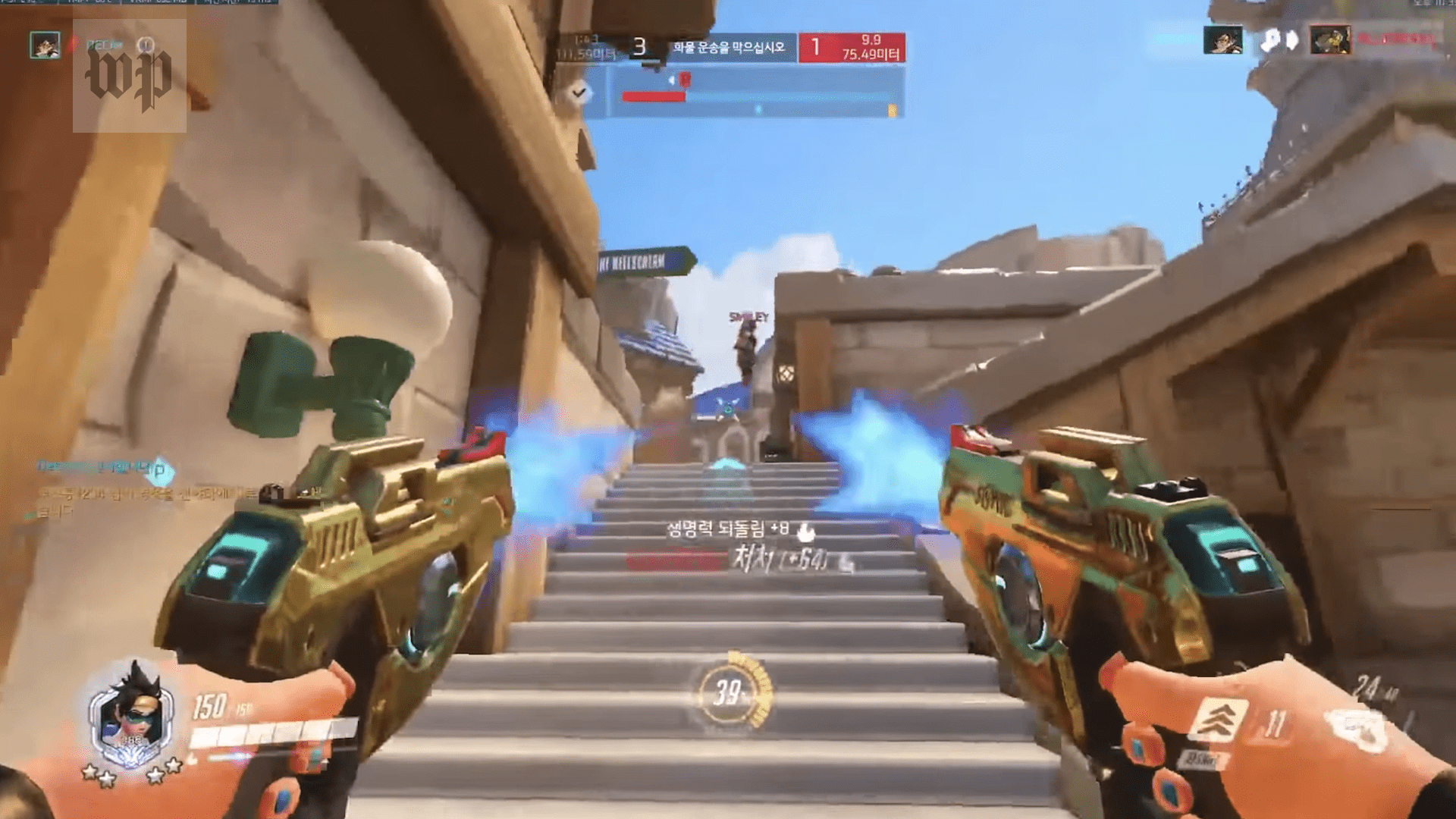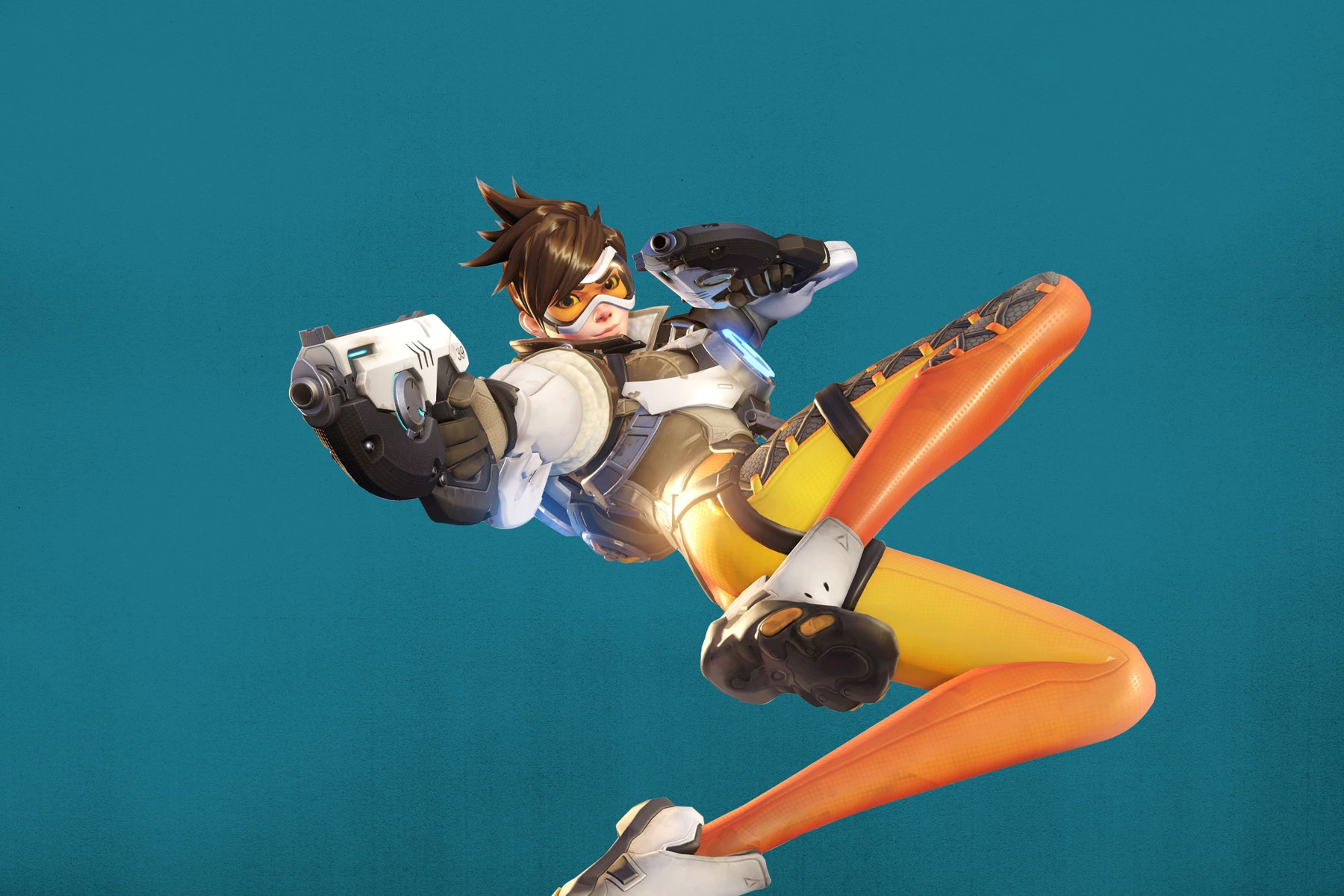For my critical play, I played Overwatch, a PC and console (I played on PC) first-person shooter published by Blizzard Entertainment. I chose to play two female characters — Tracer and Widowmaker. While both characters are DPS (damage per second) characters, they are mechanically very different, yet both challenge stereotypes of female characters in video games.
Tracer and Widowmaker are two of the game’s most mechanically intensive characters. Tracer’s damage is reliant on tracking aim, which is difficult in a game like Overwatch that has no crouch/jump stamina mechanic, thin hitboxes, and instantaneous changes of direction.

Tracer also has the lowest HP in the game, meaning she can be one-shot by most characters, putting the player on constant edge. This fragility leads to her also having a high mental/decision-making-related difficulty as well, as she must avoid taking poke/chip damage and coordinate engages with her team. However, good tracer players are also heavily rewarded for good play, which is a main tenet of game balance. A skilled tracer player can be almost impossible to kill, while simultaneously wreaking havoc in the opposing team’s back line. This all adds up to create a sense of challenge, as the character is difficult to play but very effective when used well. Overwatch also encourages fellowship, as Tracer generally works best when communicating and coordinating with another teamate to coordinate dives and finish off a kill. From a feminist lens, Tracer’s high effectiveness directly counters the “damsel-in-distress” archetype commonly found in video games — Tracer has a high level of independence and agency, and is arguably one of the most powerful characters in the game, alongside Widowmaker. Narratively, Tracer is also the protagonist and cover character of Overwatch’s fictional story. She is described as one of Overwatch’s top agents and as a bubbly yet fearless young pilot, once again countering the “damsel-in-distress” stereotype. She is also lesbian, which can help lesbian and queer gamers feel represented and give them a role model and an opportunity to explore their own identities.
Widowmaker is another of Overwatch’s most mechanically difficult characters. Widowmaker is a sniper, so unlike Tracer, she is much more reliant on flick/”point and click” aim, which is once again difficult due to instantaneous direction changes and thin hitboxes. While she isn’t overly difficult decision-making-wise, the sheer mechanical difficulty of hitting headshots in Overwatch makes her the peak of “high ceiling, low floor” characters in the game — a Widowmaker who misses her shots is essentially useless, but a Widowmaker who consistently hits her shots can singlehandedly win a game.

This counters the common practice of making female characters easy to learn and pick up, which perpetuates the stereotype that women (who may be more drawn to female characters) are less skilled at video games than men. As a side critique, Overwatch does still somewhat encourage this stereotype with other characters, especially Mercy and Moira, who are support characters (which are commonly associated with being more popular with female gamers). Narratively, Widowmaker is the exact opposite of Tracer — she’s a cold, calculating sniper for a terrorist organization, and is described as the most powerful assassin in the world. Once again, the narrative positioning of women in power counteracts traditional patriarchy, and Widowmaker’s role as a poweful villain also counteracts common tropes of women being innocent and weak.
Overall, while Overwatch still perpetuates some gender-based stereotypes, it remains very progressive in its representation of gender, racial, and LGBT diversity, and should be looked at as a model of ways to encourage diversity in video games. This is especially important in first-person-shooter games, an especially male-dominated genre that has been slow to include more female characters and representation in their narratives and gameplay.
Discussion Question: If you’ve played an FPS game, how has that game succeeded or struggled in its representation of female or queer diversity? What unique challenges do you think FPS games face in increasing their female and queer diversity?




